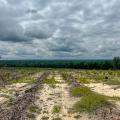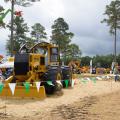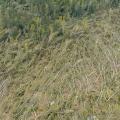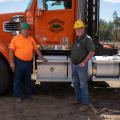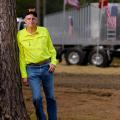Harvest of Forest Products
The annual Harvest of Forest Products report is an estimate of the value of Mississippi's timber harvest based on state timber severance tax data.
In Mississippi, a severance tax is due when timber is cut. The tax is a per unit tax and is typically paid by the timber buyer. The Mississippi State Tax Commission collects the tax as one of its "Miscellaneous" taxes. The Tax Commission reports the amount of tax paid in all 13 product categories by county. Since the timber severance tax is a per unit tax by product and we know the tax rates, we can estimate the volume of each product harvested each year.
By using the product volumes in combination with average, reference timber product prices from the Mississippi Timber Price Report we estimate the value of Mississippi's timber harvest each year. Estimates of the timber harvest value date back to 1940 when the timber severance tax was initiated.
The most recent reports are available here and harvest values are shown in the table.
For further information on the Harvest of Forest Products report contact James Henderson.
Resources
Harvest History - Summary of Harvest values from 1940 to present
2021 Harvest of Forest Products Report-PDF
2020 Harvest of Forest Products Report-PDF
2019 Harvest of Forest Products Report-PDF
2018 Harvest of Forest Products Report-PDF
2017 Harvest of Forest Products Report-PDF
2016 Harvest of Forest Products Report-PDF
2015 Harvest of Forest Products Report-PDF
2014 Harvest of Forest Products Report-PDF
2013 Harvest of Forest Products Report-PDF
2012 Harvest of Forest Products Report-PDF
2011 Harvest of Forest Products Report-PDF
2010 Harvest of Forest Products Report-PDF
2009 Harvest of Forest Products Report-PDF
2008 Harvest of Forest Products Report-PDF
2007 Harvest of Forest Products Report-PDF
2006 Harvest of Forest Products Report-PDF
2005 Harvest of Forest Products Report-PDF
2004 Harvest of Forest Products Report-PDF
2003 Harvest of Forest Products Report-PDF
2002 Harvest of Forest Products Report-PDF
2001 Harvest of Forest Products Report-PDF
2000 Harvest of Forest Products Report-PDF
1999 Harvest of Forest Products Report-PDF
1998 Harvest of Forest Products Report-PDF
1997 Harvest of Forest Products Report-PDF
1996 Harvest of Forest Products Report-PDF
1995 Harvest of Forest Products Report-PDF
1994 Harvest of Forest Products Report-PDF
1993 Harvest of Forest Products Report-PDF
1992 Harvest of Forest Products Report-PDF
1991 Harvest of Forest Products Report-PDF
1990 Harvest of Forest Products Report-PDF
1989 Harvest of Forest Products Report-PDF
1988 Harvest of Forest Products Report-PDF
1987 Harvest of Forest Products Report-PDF
1986 Harvest of Forest Products Report-PDF
1985 Harvest of Forest Products Report-PDF
1984 Harvest of Forest Products Report-PDF
1983 Harvest of Forest Products Report-PDF
1982 Harvest of Forest Products Report-PDF
1981 Harvest of Forest Products Report-PDF
Publications
News
STARKVILLE, Miss. -- One of Kim Hancock’s routine jobs is assisting 4-H’ers in Jones County with their livestock projects.
Success Stories
In an industry where every piece of equipment can seriously hurt the operators and crew, one Mississippi logging company has not recorded an accident during more than 40 years of operation, from Brandon to Gulfport.
Annual forestry show gathers industry, highlights best logging practices
Year after year, the Mid-South Forestry Equipment Show attracts thousands of visitors. Canceled in 2020, as most large gatherings were because of the COVID pandemic, the show opened in 2021 with about 3,500 former and new attendees ready to discover the latest forestry equipment, safety guidelines, and timber-harvesting methods.


